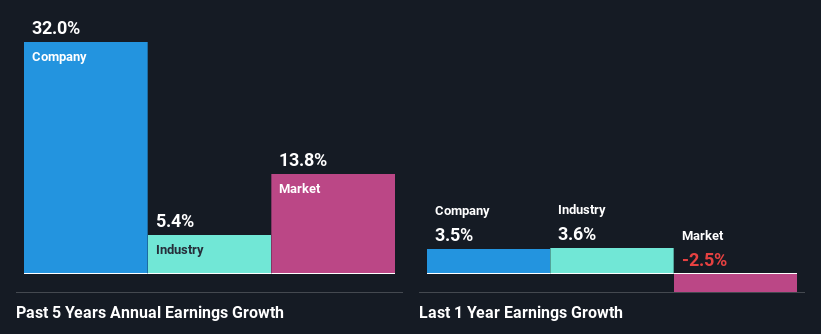Is Otter Tail Corporation's (NASDAQ:OTTR) Latest Stock Performance A Reflection Of Its Financial Health?
Otter Tail's (NASDAQ:OTTR) stock is up by a considerable 16% over the past three months. Since the market usually pay for a company’s long-term fundamentals, we decided to study the company’s key performance indicators to see if they could be influencing the market. Particularly, we will be paying attention to Otter Tail's ROE today.
Return on equity or ROE is an important factor to be considered by a shareholder because it tells them how effectively their capital is being reinvested. In other words, it is a profitability ratio which measures the rate of return on the capital provided by the company's shareholders.
See our latest analysis for Otter Tail
How Is ROE Calculated?
The formula for return on equity is:
Return on Equity = Net Profit (from continuing operations) ÷ Shareholders' Equity
So, based on the above formula, the ROE for Otter Tail is:
20% = US$294m ÷ US$1.4b (Based on the trailing twelve months to December 2023).
The 'return' is the income the business earned over the last year. Another way to think of that is that for every $1 worth of equity, the company was able to earn $0.20 in profit.
What Is The Relationship Between ROE And Earnings Growth?
Thus far, we have learned that ROE measures how efficiently a company is generating its profits. We now need to evaluate how much profit the company reinvests or "retains" for future growth which then gives us an idea about the growth potential of the company. Assuming all else is equal, companies that have both a higher return on equity and higher profit retention are usually the ones that have a higher growth rate when compared to companies that don't have the same features.
Otter Tail's Earnings Growth And 20% ROE
At first glance, Otter Tail seems to have a decent ROE. On comparing with the average industry ROE of 9.0% the company's ROE looks pretty remarkable. This certainly adds some context to Otter Tail's exceptional 32% net income growth seen over the past five years. We believe that there might also be other aspects that are positively influencing the company's earnings growth. For example, it is possible that the company's management has made some good strategic decisions, or that the company has a low payout ratio.
Next, on comparing with the industry net income growth, we found that Otter Tail's growth is quite high when compared to the industry average growth of 5.4% in the same period, which is great to see.
The basis for attaching value to a company is, to a great extent, tied to its earnings growth. It’s important for an investor to know whether the market has priced in the company's expected earnings growth (or decline). This then helps them determine if the stock is placed for a bright or bleak future. If you're wondering about Otter Tail's's valuation, check out this gauge of its price-to-earnings ratio, as compared to its industry.
Is Otter Tail Efficiently Re-investing Its Profits?
The three-year median payout ratio for Otter Tail is 26%, which is moderately low. The company is retaining the remaining 74%. This suggests that its dividend is well covered, and given the high growth we discussed above, it looks like Otter Tail is reinvesting its earnings efficiently.
Besides, Otter Tail has been paying dividends for at least ten years or more. This shows that the company is committed to sharing profits with its shareholders. Our latest analyst data shows that the future payout ratio of the company is expected to rise to 54% over the next three years. Therefore, the expected rise in the payout ratio explains why the company's ROE is expected to decline to 12% over the same period.
Conclusion
Overall, we are quite pleased with Otter Tail's performance. In particular, it's great to see that the company is investing heavily into its business and along with a high rate of return, that has resulted in a sizeable growth in its earnings. That being so, according to the latest industry analyst forecasts, the company's earnings are expected to shrink in the future. To know more about the company's future earnings growth forecasts take a look at this free report on analyst forecasts for the company to find out more.
Have feedback on this article? Concerned about the content? Get in touch with us directly. Alternatively, email editorial-team (at) simplywallst.com.
This article by Simply Wall St is general in nature. We provide commentary based on historical data and analyst forecasts only using an unbiased methodology and our articles are not intended to be financial advice. It does not constitute a recommendation to buy or sell any stock, and does not take account of your objectives, or your financial situation. We aim to bring you long-term focused analysis driven by fundamental data. Note that our analysis may not factor in the latest price-sensitive company announcements or qualitative material. Simply Wall St has no position in any stocks mentioned.

 Yahoo Finance
Yahoo Finance 
